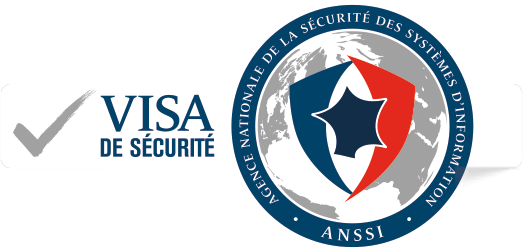framing
Frame your projects
Whether it is a question of conducting an opportunity study, framing a project or choosing a solution, Synetis has a consulting team with more than 10 years of experience, having built a proven methodology, modelled its own tools and having concrete feedback on projects in order to carry out these missions successfully.
Accompaniment may cover the following points:
- Validate the opportunity to carry out a project
Define the project scope - Identify needs and ensure that they are in line with the company’s strategy
- Construct a target to be hit and the associated trajectory
- Identify the means to be implemented to reach the target
- Propose an organization for both the project and run phases
The methodology proposed by Synetis is proven, regardless of the IAM domain of the project to be carried out (Identity & Access Governance – IGA, Access Management – AM, Privileged Access Management – PAM, Customer Identity & Access Management – CIAM). The typology of the workshops to be conducted is adapted, the client speakers solicited depend on the context of the study and the experts mobilized by Synetis are specific to the targeted field.
State of the art
- History of the AMI
- Description of the different areas (objectives, expectations by population, overall vision)
- Logical bricks and market vision
- Project approach and governance
- Success factors
- Feedback from experience
- Questions & Answers
Build your
Cybersecurity
with Synetis!
Framing process
The analysis of the existing is an essential and unavoidable step of the framing mission. The objective is to bring out:
- The maturity of the ecosystem in place relative to the state of the art of the targeted MRI domain, possibly including a risk analysis phase.
- The current issues in the client ecosystem through interviews with the different actors of the processes related to the scope of the mission
- The strengths (technical, functional and/or organizational) on which to build the target to be reached.
- The gains brought
- Risks treated
- Any decommissioned components
- The validated trajectory contains, in particular, the project subdivision step by step.
The Project Plan finally provides elements of load, planning, cost, but also the organization to be set up, the actors to be mobilized, the success factors…
The scoping mission concludes with a final report, presented to all stakeholders. The goal is to share the approach followed and to confirm the target and trajectory identified in order to validate the launch of the project.
For the success of a framing mission, a few points of attention:
- A controlled perimeter
- The availability of the actors concerned
- An analysis of the existing situation validated by client-side knowledge.
- A prioritized inventory of needs
- Iterative validation of the deliverables through intermediate restitutions
- The definition of a target that can be reached within a well-defined time frame
To go further...
Synetis also supports its customers in their choice of IAM solutions. Several approaches are possible and the methodology of choice depends on the client:
- Recommendation of solutions adapted to the customer context based on the Synetis experience
- Drafting of specifications for a wider competition of market solutions
- Organization of demonstrations or PoCs
- Support for the RFI and RFP phases (analysis, participation in support, decision support)



